I went to Wyoming two weeks ago – it was my first visit as an adult. Vague childhood memories of Devil’s Tower and Yellowstone didn’t prepare me for just how different the landscape is out there. We flew in to Billings, Montana, which I’m sure has its charms when you get to know it but on the surface is pretty raw and industrial, then drove south into the sage brush, stone, and sky.
It’s crazy being in a place with next to no trees. You drive for miles and there’s nothing – the proverbial surface of the moon. Just rolling hills and bluffs carpeted in light greens – thinning vegetative hair on a brown, rocky scalp. The land wears the weather – the sandstone eroded by wind and rain and time; the hills coming together and disintegrating into washed out seams that end in pale green puddles of foxtail barley – the only hint that water’s around.
When you cross the Montana/Wyoming line the earth takes on a reddish hue on account of shale deposits. (The Interstate asphalt is pink.) This is coal country, and that’s not a throwaway term. There’s an estimated 50 billion tons of recoverable coal here, and because of its low sulfur content it’s coveted all over the world by electric plants. (The electricity in one out of five homes and businesses in the U.S. is generated with this coal, and it accounts for 14% of our total carbon emissions – Google “powder river basin coal” to learn more.) Plumes of red dust from the surface mines can be seen from miles away.
The rawness of the place makes you feel sympathetic towards coal (carbon emissions aside). The extraction is miles away, literally and figuratively, from the sad pictures you see of forested ecosystems being destroyed by mountain-top removal in the Appalachians. As you turn off your truck at a railroad crossing and watch a train with 150 coal cars amble through the barren landscape, it makes sense somehow. You think: what else would you do for money out here?
This was and is Indian Country. If you squint, you can imagine the native Shoshone, then the Crow, the Sioux, and the Lakota – tribes who came or were pushed from the east – hunting the herds of buffalo that once roamed these hills. Custer’s Last Stand occurred here. I’m reading this great book by Paul Johnson called A History of the American People; in it he writes: “Custer was a brave but insensitive, arrogant, and often stupid man, and whenever his military record is examined in detail he emerges badly.” Some of the Crow recollections of him I read in a reservation gift shop made this description sound charitable.
The town where I based my stay is called Sheridan, named for General Philip Sheridan, who exacted revenge for Custer. According to Wikipedia, he coined the phrase “the only good Indian is a dead Indian” and at one point testified in favor of bison poaching, suggesting that the legislature should give each poacher a medal, engraved with a dead buffalo on one side and a discouraged-looking Indian on the other. Of course, history is complicated, and this same General Sheridan helped the North win the Civil war, was a fervent conservationist who helped create Yellowstone Park, and may have had an Indian girlfriend, so we should be careful judging a man none of us knew.
I’m getting very bogged down in historical minutia – sorry about that.
The part of the trip that will be most interesting to you is the Bighorn Mountains, where there are trees and it’s beautiful. Some pictures below. When I was in the lowlands, surrounded by rock and yellowing vegetation and 105 degree heat, I thought: how do people live here? Then we drove up into the mountains, where it was 70 and the peaks were still covered in last winter’s snow, and I thought: Oh. This is how.
One of the cool things about living in northern New England is that we’re privy to a whole host of circumboreal plant species – plants that exist above a certain latitude all around the globe. It was wildflower season in the Bighorns, and sure enough it looked just like the White Mountains (or an alpine area in Norway, or Russia.) Many of the alpine flowers we highlighted in our summer issue were in full bloom. The trees were almost all conifers – huge stands of lodgepole pine, then some pretty spruce/fir stands that wouldn’t look out of place here (though out there it’s Engelmann spruce and Douglas fir.) Because it’s so dry, wood doesn’t rot, so a lot of the relics of the old lumber days persist. Below find a picture of a splash dam in one of the Tongue River tributaries that was part of a logging job in the late 1800s. They were sending logs and pre-cut railroad ties to Dayton, Wyoming.
Sixty-six percent of the landscape in the Bighorns is forest and 34 percent is alpine meadow or water. There are clear lines between forest and field, unlike in the Northeast, where the forest would take over everything if we let it. I don’t know why this is. While we saw moose, elk, mule deer, whitetails, and cattle browsing, it doesn’t seem like herbivory is the answer. Maybe snow? Wind patterns?
The forest wants to burn out there, and there’s evidence of fire everywhere. I know nothing about western silviculture, but it seems like the only areas in which I saw lodgepole pine regenerating naturally was where the earth had been heavily disturbed. Probably the duff layer has to get burned (or destroyed by a machine) for a seed to germinate. We saw one logging job where the contractor was doing a fire suppression thinning for the forest service. They were using beautiful equipment – a feller buncher, a CTL harvester, a grapple skidder, and an excavator – and selectively cutting little pine pecker poles just to thin the forest. I have no idea how the economics of that worked, other than the fact that they were working for the federal government, who I guess is thinking what’s $1 million in prevention in the face of potentially $1 billion in fire damage? Search out varying perspectives on western fire suppression online and you’ll find ecologists (and economists) who disagree with this logic.


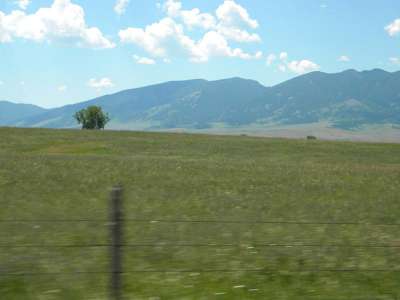
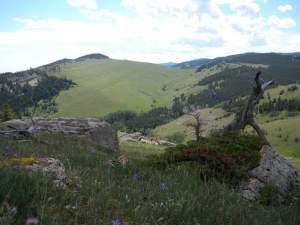
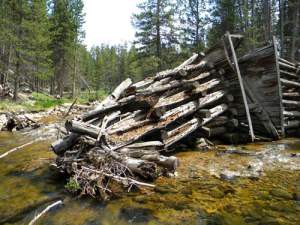
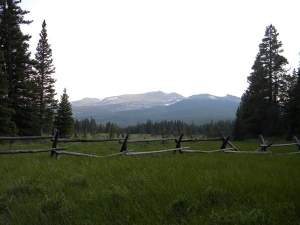
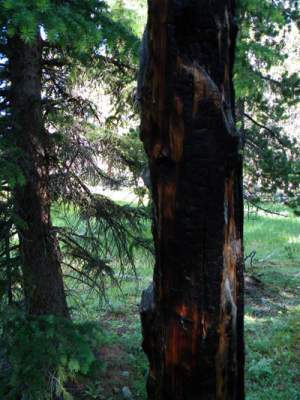
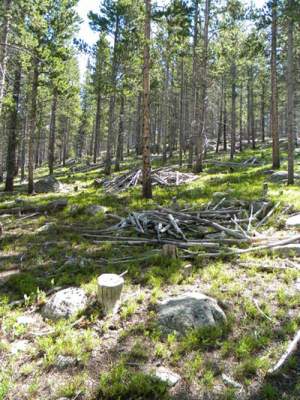
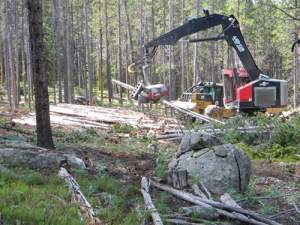
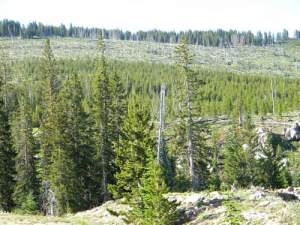
Discussion *